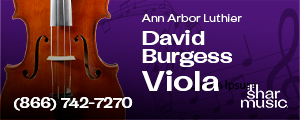
April 7, 2005 at 9:33 AM
George and I were driving in the snow. Suddenly, in order to avoid meeting with an apparition of a moose, we took a dive off the road and into space. We were floating for some time in the flat light, with nothing but a blank page for a landscape. I wondered if somehow we had fallen into a bottomless crevasse. This couldn't be the explanation, for the whiteness went uninterrupted with not even a mention of a shadow of darkness. After I concluded that the whiteness was permanant and noticed a silent calm, I decided we must have landed and stepped out of the car. No land rose to greet my feet--only the whiteness. Without a horizon to secure my sense of gravity, I became weightless and floated into a nearby town to continue the rest of my day. Then I woke up.My thoughts have been subconsciously returning to the concept of negative space and its importance in art and music. I become weary of hearing all the notes from lesson to lesson, and this is when it hits me that sometimes it is not the notes that need improvement, but the silence.
On the piano, I have a short Bartok study, a folk tune that creates an image of children at play. The piece continues merrily, conjuring up memories of hide-and-seek and chases up and down grassy hills. The right hand carries the melody, while the left hand is its playmate, busy filling the space with pounces, tip-toes, and playful dashes.
But an interesting thing happens when Bartok inserts a one-measure rest followed by two measures of a triple-soft chord (with fermata), followed by a second chord, even softer (another fermata), and one more empty measure, all Andante. This two-chord progression should take at least ten seconds to perform.
After the silence, the piece continues with a slightly different flavor. The silence interrupts two more times, and this is what really makes the piece what it is. It affects the mood of the audience. They hold their breath, and their ears strain to catch what will happen next.
If you plow through all the road signs, the fermatas and tempo changes, and the entire measures of rests that were intentionally placed there, you have just lost the meaning of the music. Silence and timing--the negative space in music--is equally as important as the music itself.
And how the students react when I ask them to linger there on those two chords! Being still is so uncomfortable for a musician. Over the course of the year I have witnessed a miserly trend toward whole notes and rests; we like to cheat them of their time. I count out loud to show them what has literally been written. Then we talk about the reason why they think it was written that way. What could it mean? Is it there to create that same feeling you get after you've found your hiding spot and you listen for the sound of the footsteps of the seeker? Is it the echo of Mother's call to dinner, the one that we always ignored because perhaps we didn't hear it after all? I don't know, and that's the great thing about music--it can mean what you want it to mean, but it should mean at least something, even if it's just a feeling, a color, or an impression.
In order to create the music, we must be at peace with the silence and then find the very best way to carve the sound into it.
Posted on April 7, 2005 at 1:12 PM
Posted on April 7, 2005 at 2:16 PM
Posted on April 7, 2005 at 5:07 PM
Posted on April 8, 2005 at 12:25 AM
Posted on April 8, 2005 at 1:39 AM
Posted on April 8, 2005 at 6:04 AM
Someone I once knew told me that the most difficult things to play in music are pauses. In an old Billy Joel recording of Innocent Male, there is a great pause. No matter how many times I listen to the recording, I can't predict when the pause will end.
I, too, love silence and am reluctant to break it. One becomes aware of so many tiny sounds that would not be noticeable otherwise. I have this experience only in rural places. As a great Native American chief said, "There is no quiet place in the white man's cities." So sad, so true.
This entry has been archived and is no longer accepting comments.
Violinist.com is made possible by...
Dimitri Musafia, Master Maker of Violin and Viola Cases
International Violin Competition of Indianapolis
Johnson String Instrument/Carriage House Violins
Subscribe
Laurie's Books
Discover the best of Violinist.com in these collections of editor Laurie Niles' exclusive interviews.

Violinist.com Interviews Volume 1, with introduction by Hilary Hahn

Violinist.com Interviews Volume 2, with introduction by Rachel Barton Pine






